By Chelsea Yates
Photo credit: Mark Stone / University of Washington
“I firmly believe that good health care should be accessible and affordable, no matter where one lives.” – Nuttada Panpradist
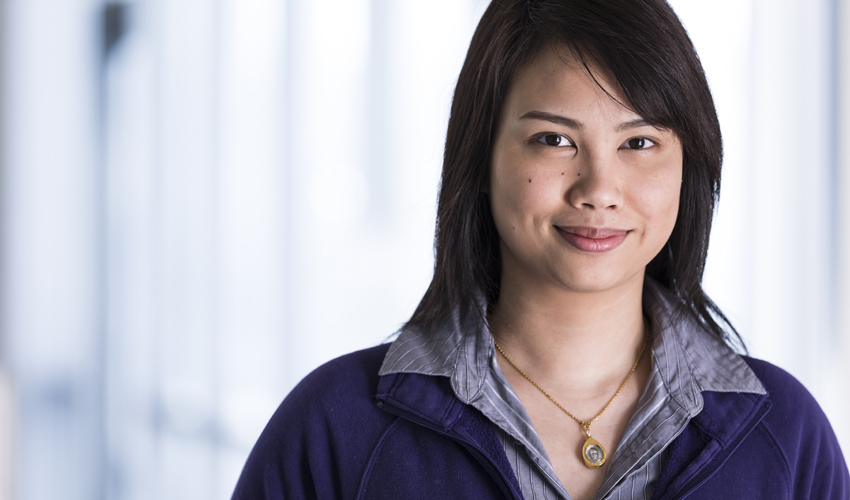
BioE PhD student Nuttada Panpradist.
Though many countries have seen a significant decline in HIV/AIDS in recent years, the disease continues to be a major health issue worldwide. It is still among the top 10 causes for death globally and is most prevalent in sub-Saharan Africa. The World Health Organization (WHO) estimates that there were 25.6 million people living with HIV in this region last year and that it accounts for two-thirds of new HIV infections globally. This is largely due to limited access to medical care, testing and treatment.
Nuttada Panpradist, a PhD student in Bioengineering, hopes her research will help change that. She recently received a $50,000 APF Student Technology Prize for Primary Healthcare to develop an automated, instrument-free diagnostic device to detect HIV infection, viral load and drug resistance. The device will allow blood samples to be tested onsite (instead of being sent to a lab for processing) and will yield near-immediate results.
The College of Engineering recently talked with Nuttada about her research and the impact she hopes it will have on global health.
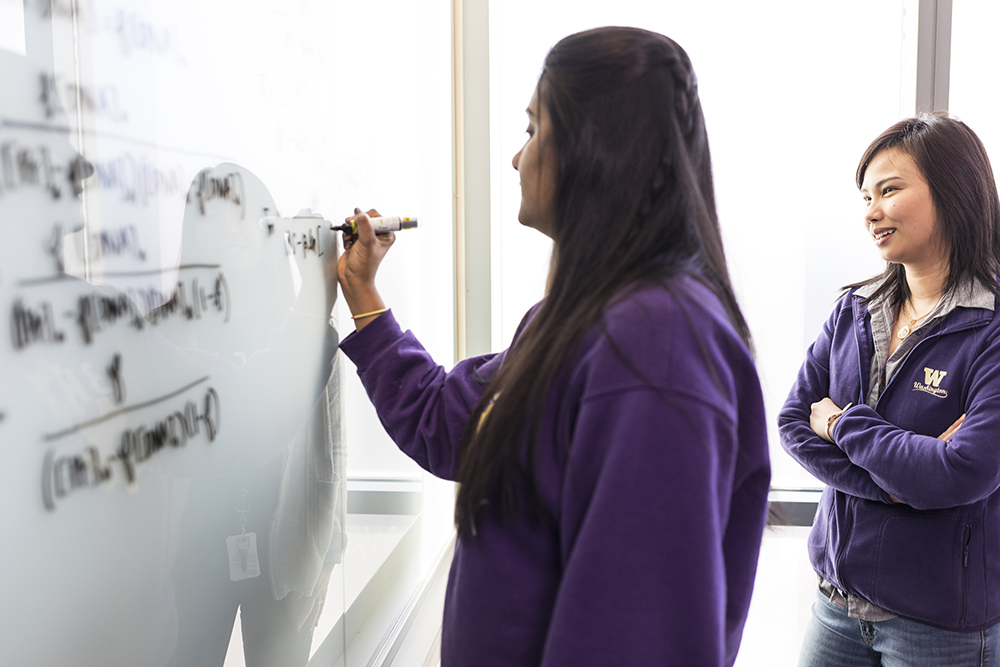 BioE undergraduate student Annapurni Sriram and Nuttada Panpradist.
BioE undergraduate student Annapurni Sriram and Nuttada Panpradist.
COE: You grew up in Thailand and, before coming to the U.S., you studied petrochemical engineering. Why did you switch gears to pursue graduate work in bioengineering at the UW?
NP: I loved petrochemical engineering but had a difficult time finding a job after I graduated. At that time, in Thailand, the field wasn’t very welcoming of women engineers. So I left engineering to work in medical sales. I enjoyed learning about pharmaceuticals and medical devices and soon discovered that I couldn’t fully turn off the engineering part of my brain! I started thinking about ways to apply my engineering background to health technology, and that’s what led me to discover bioengineering. I wanted to do research that would have a positive impact on global health. I firmly believe that good health care should be accessible and affordable, no matter where one lives. There weren’t any bioengineering programs in Thailand, so I started exploring schools and that’s how I found the UW.
What was it like to transition into the bioengineering graduate program?
It definitely wasn’t easy. I needed to do a lot of work on my own to get up to speed! Before starting the program, I completed certificate degrees in pharmacy technology from Pima Medical Institute and nanotechnology from North Seattle Community College.
Fortunately, I was offered a position early on in my graduate studies in Professor Barry Lutz’s lab. I also started working with Dr. Lisa Frenkel and Ingrid Beck of Seattle Children’s Research Institute to help simplify an instrument-free device for HIV diagnosis and drug resistance detection.
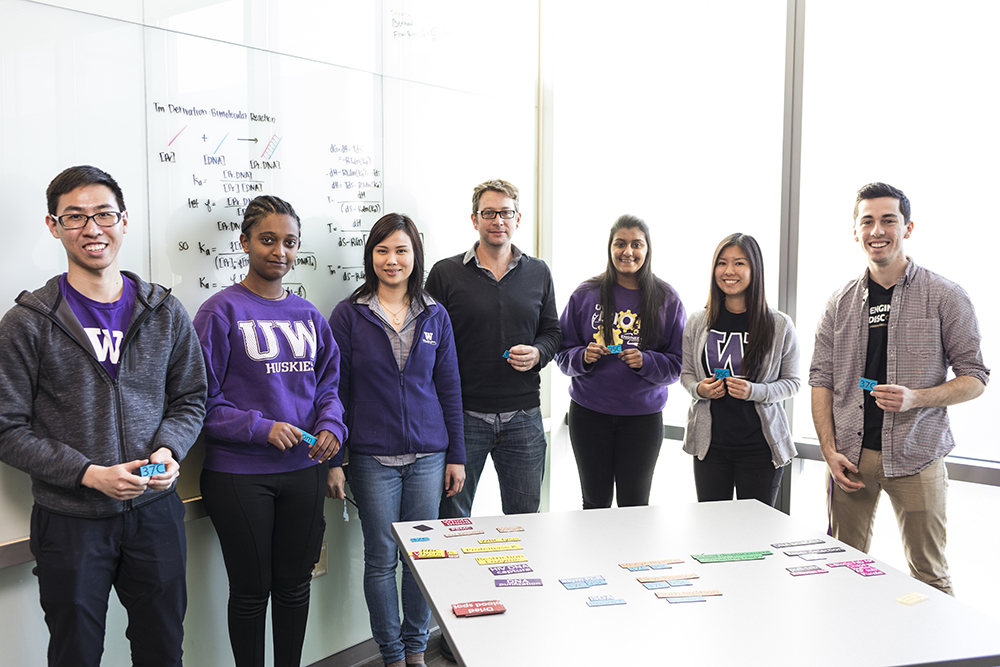 Nuttada works with several undergraduate BioE students on her research team (left to right): Jonathan Lim, Betelhem Yohannes, Nuttada Panpradist, Dr. Barry Lutz, Annapurni Sriram, Nikki Higa and David McIntyre. Others (not pictured) who also work on the project include students Annie Wong-On-Wing, Isabella Spielmann and alumnus Ian Andrews (’16).
Nuttada works with several undergraduate BioE students on her research team (left to right): Jonathan Lim, Betelhem Yohannes, Nuttada Panpradist, Dr. Barry Lutz, Annapurni Sriram, Nikki Higa and David McIntyre. Others (not pictured) who also work on the project include students Annie Wong-On-Wing, Isabella Spielmann and alumnus Ian Andrews (’16).
And this is the device for which you’ve recently won $50,000 to develop?
A version of it, yes. The original assay developed by Dr. Frenkel is called oligonucleotide ligation assay, or “OLA,” for short. We simplified the OLA workflow for use in the lab, but we want it to have broader impact — specifically to be used at the point of care. So we’re working on a portable version, called “OLA-SIMPLE.” It’s a self-contained paper-based system — about the size of a credit card — that will provide a fast visual report of HIV diagnosis, viral load and drug resistance. The idea is that health care workers can use it to diagnose HIV on-the-spot. In about an hour, the system will process a plasma sample and display easy-to-read results indicating the patient’s viral load and resistance to multiple types of HIV drugs.
Why is this especially important in resource-poor countries?
Although there is no cure for HIV infection, antiretroviral drugs can be effective in controlling the virus and helping to prevent transmission. People who are properly treated can enjoy healthy, long and productive lives. There are different kinds of HIV, and certain strains are resistant to the drugs generally prescribed for treatment. It’s important to get as accurate of a diagnosis as possible so that medical professionals can treat effectively from the start. In the U.S., we have access to labs and clinicians, so when people test positive for HIV, the type of HIV they have is determined and their treatment is tailored accordingly. These patients then regularly meet with their doctors who monitor their disease and can retest for drug resistance over the course of their lives.
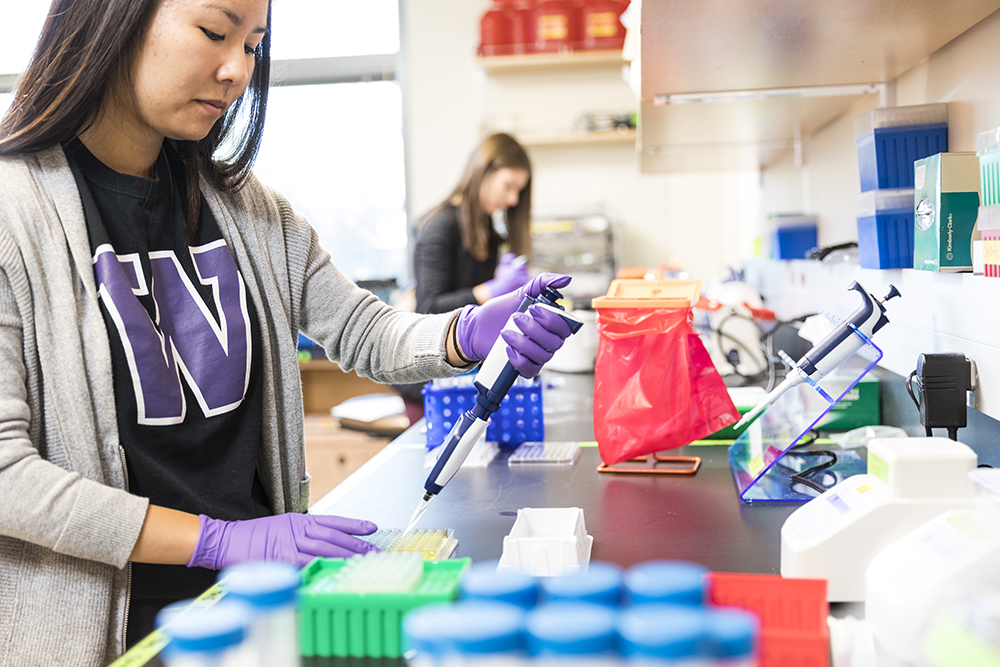 BioE undergraduate student Nikki Higa.
BioE undergraduate student Nikki Higa.
But HIV drug resistance testing isn’t always available in developing countries, and when it is, it can be expensive. Patients in these areas are commonly given drugs and told to “wait and see” what happens. Often they only consult a doctor again if their symptoms worsen. So, drug resistance testing isn’t always reliable, nor is the course of treatment.
This means HIV continues to spread. It’s important to acknowledge that this isn’t the fault of the patient or of the health care providers. Clinics in developing countries don’t always have access to labs and equipment like we have in the U.S., and they’re often trying to serve more people than they can reasonably accommodate. This is why my team wants to intervene. If we can introduce a low-cost, easy-to-use device to provide immediate diagnosis and resistance detection, then we can start to make a real difference in global communities.
What do you find most challenging about this work?
Well, what’s easiest for the end-user is often quite difficult for engineers to design and build, but it’s incredibly satisfying when we figure it out. This work is bridging engineering and clinical needs, and it’s amazing how — even though we collaborate through fields like bioengineering — there’s still such a huge gap. Engineers and clinicians often speak in different professional languages, so it can be challenging to understand each other. But, fortunately, my team believes in the future of our device, so we’re working through those hurdles together for the greater good of the project.
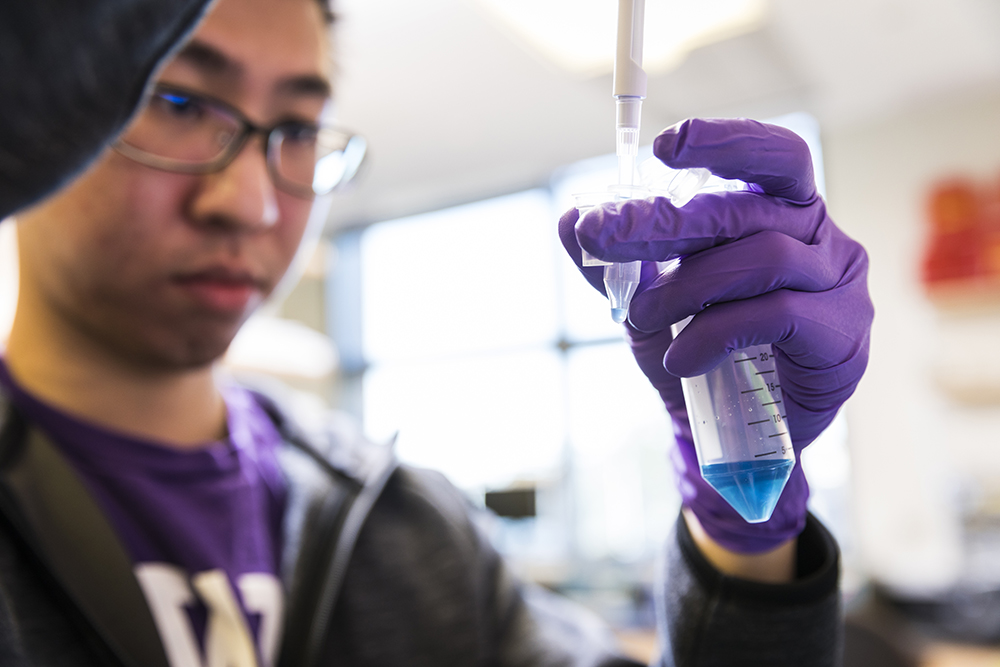 BioE undergraduate student Jonathan Lim.
BioE undergraduate student Jonathan Lim.
Is the OLA-SIMPLE device currently being used or tested at point-of-care?
With Dr. Frenkel, we’re hoping to partner with a local company on the production and packaging of the device, and testing will soon begin in Kenya, thanks to the UW Department of Global Health’s TREE (Treatment, Research, and Expert Education) program. This will be our first “clinical trial,” which is very exciting.
You could be researching any number of things through BioE. Why this?
Because everyone deserves good health care. It shouldn’t be a privilege; it should be a basic human right. If I can apply my skills in a way that contributes to the greater good, then that’s exactly what I want to do. I’m so grateful to be at a place like the UW; it’s wonderful to know that what matters so much to me in my research also matters to this institution.
Learn more about how Nuttada’s team is developing OLA-SIMPLE and the UW’s Population Health initiative to advance the health of individuals and communities across the globe.
Originally published February 6, 2017